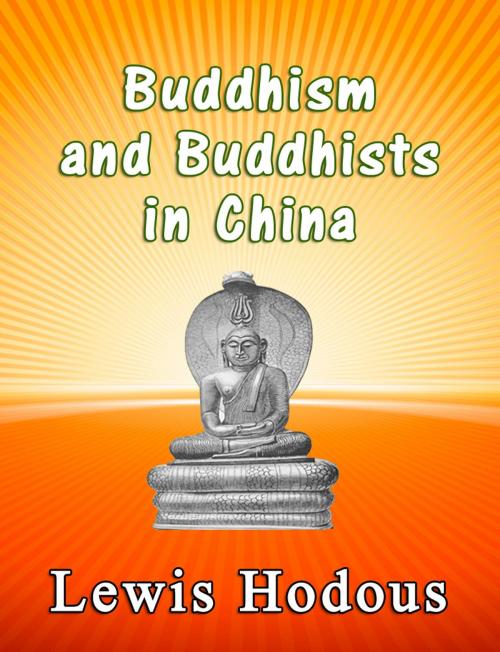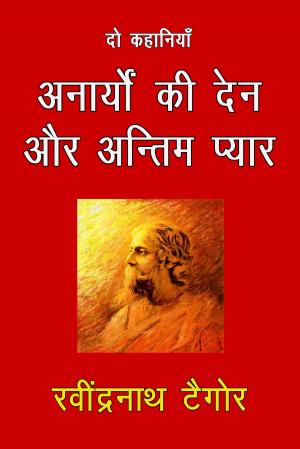| Author: | Lewis Hodous | ISBN: | 9781365713934 |
| Publisher: | Sai ePublications | Publication: | January 30, 2017 |
| Imprint: | Sai ePublications | Language: | English |
| Author: | Lewis Hodous |
| ISBN: | 9781365713934 |
| Publisher: | Sai ePublications |
| Publication: | January 30, 2017 |
| Imprint: | Sai ePublications |
| Language: | English |
Buddhism was not an indigenous religion of China. Its founder was Gautama of India in the sixth century B.C. Some centuries later it found its way into China by way of central Asia. There is a tradition that as early as 142 B.C. Chang Ch'ien, an ambassador of the Chinese emperor, Wu Ti, visited the countries of central Asia, where he first learned about the new religion which was making such headway and reported concerning it to his master. A few years later the generals of Wu Ti captured a gold image of the Buddha which the emperor set up in his palace and worshiped, but he took no further steps.
According to Chinese historians Buddhism was officially recognized in China about 67 A.D. A few years before that date, the emperor, Ming-Ti, saw in a dream a large golden image with a halo hovering above his palace. His advisers, some of whom were no doubt already favorable to the new religion, interpreted the image of the dream to be that of Buddha, the great sage of India, who was inviting his adhesion. Following their advice the emperor sent an embassy to study into Buddhism. It brought back two Indian monks and a quantity of Buddhist classics. These were carried on a white horse and so the monastery which the emperor built for the monks and those who came after them was called the White Horse Monastery. Its tablet is said to have survived to this day.
This dream story is worth repeating because it goes to show that Buddhism was not only known at an early date, but was favored at the court of China. In fact, the same history which relates the dream contains the biography of an official who became an adherent of Buddhism a few years before the dream took place. This is not at all surprising, because an acquaintance with Buddhism was the inevitable concomitant of the military campaigning, the many embassies and the wide-ranging trade of those centuries. But the introduction of Buddhism into China was especially promoted by reason of the current policy of the Chinese government of moving conquered populations in countries west of China into China proper, The vanquished peoples brought their own religion along with them. At one time what is now the province of Shansi was populated in this way by the Hsiung-nu, many of whom were Buddhists.
Buddhism was not an indigenous religion of China. Its founder was Gautama of India in the sixth century B.C. Some centuries later it found its way into China by way of central Asia. There is a tradition that as early as 142 B.C. Chang Ch'ien, an ambassador of the Chinese emperor, Wu Ti, visited the countries of central Asia, where he first learned about the new religion which was making such headway and reported concerning it to his master. A few years later the generals of Wu Ti captured a gold image of the Buddha which the emperor set up in his palace and worshiped, but he took no further steps.
According to Chinese historians Buddhism was officially recognized in China about 67 A.D. A few years before that date, the emperor, Ming-Ti, saw in a dream a large golden image with a halo hovering above his palace. His advisers, some of whom were no doubt already favorable to the new religion, interpreted the image of the dream to be that of Buddha, the great sage of India, who was inviting his adhesion. Following their advice the emperor sent an embassy to study into Buddhism. It brought back two Indian monks and a quantity of Buddhist classics. These were carried on a white horse and so the monastery which the emperor built for the monks and those who came after them was called the White Horse Monastery. Its tablet is said to have survived to this day.
This dream story is worth repeating because it goes to show that Buddhism was not only known at an early date, but was favored at the court of China. In fact, the same history which relates the dream contains the biography of an official who became an adherent of Buddhism a few years before the dream took place. This is not at all surprising, because an acquaintance with Buddhism was the inevitable concomitant of the military campaigning, the many embassies and the wide-ranging trade of those centuries. But the introduction of Buddhism into China was especially promoted by reason of the current policy of the Chinese government of moving conquered populations in countries west of China into China proper, The vanquished peoples brought their own religion along with them. At one time what is now the province of Shansi was populated in this way by the Hsiung-nu, many of whom were Buddhists.















